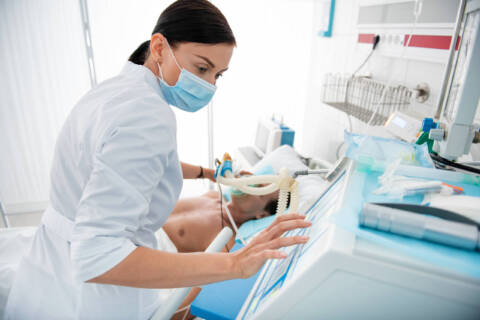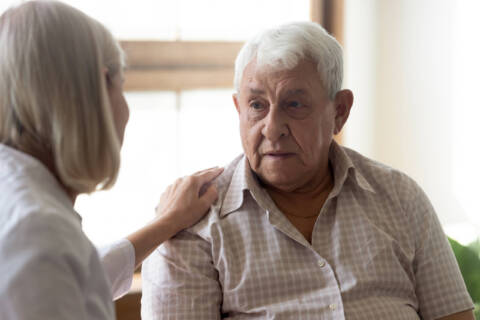Ventilators and other respiratory equipment is crucial in respiratory therapy, offering vital support to individuals grappling with compromised lung function. Approximately in the United States have been diagnosed with chronic obstructive pulmonary disease (COPD) – a condition often necessitating respiratory intervention. Ventilators and respiratory devices, as well as the respiratory therapists who help facilitate their use, help patients who have been diagnosed with respiratory ailments maintain comfortable, productive lives. Ventilators, often referred to as mechanical ventilators or respirators, are sophisticated devices designed to support individuals who are unable to breathe adequately on their own. In therapeutic settings, ventilators are employed for various reasons, including to combat respiratory failure, chronic respiratory conditions or during the postoperative period. These life-saving machines facilitate controlled breathing to ensure adequate oxygenation and carbon dioxide removal, supporting patients through critical phases of respiratory distress. In intensive care units, ventilators provide crucial respiratory support to patients with severe respiratory conditions. Respiratory therapists collaborate closely with healthcare teams to monitor and adjust ventilator settings, optimizing oxygen delivery and maintaining respiratory stability. The seamless integration of ventilators into critical care protocols reflects their significant role in managing acute respiratory distress and promoting patient recovery. Ventilators extend their impact beyond critical care settings, catering to individuals with chronic respiratory conditions such as chronic obstructive pulmonary disease (COPD) or neuromuscular disorders. Home ventilators empower patients to manage their respiratory health in familiar environments, enhancing overall quality of life. Respiratory therapists play a vital role in educating patients and caregivers on the proper use of home ventilators, ensuring optimal functionality and patient comfort. Non-invasive ventilation (NIV) methods, including bilevel positive airway pressure (BiPAP) and continuous positive airway pressure (CPAP), represent innovative approaches to respiratory therapy. These techniques provide respiratory support without the need for intubation, making them valuable for conditions such as sleep apnea and certain forms of respiratory failure. Respiratory therapists must be able to adeptly navigate the nuances of non-invasive ventilation and understand how their use can be tailored to individual patient needs. Beyond ventilators, a spectrum of respiratory equipment contributes to pulmonary rehabilitation programs. Incentive spirometers, positive expiratory pressure (PEP) devices and nebulizers are among the arsenal of devices employed by respiratory therapists to enhance lung function and promote respiratory wellness. These tools, integrated into comprehensive rehabilitation plans, empower patients to actively participate in their journey toward improved respiratory health. Modern, compact portable oxygen concentrators represent a revolutionary advancement in respiratory therapy, offering individuals with chronic respiratory conditions the freedom to engage in daily activities while receiving supplemental oxygen. Modern variations don’t require the heavy, high-pressure oxygen cylinders required in decades past. Respiratory therapists can guide patients in selecting and using portable oxygen concentrators, ensuring optimal oxygen delivery and promoting mobility and independence. Respiratory therapists actively engage in ventilator weaning protocols, guiding patients through the transition from mechanical ventilation to independent breathing. This nuanced process involves gradual adjustments to ventilator settings, coupled with respiratory exercises and monitoring. The goal is to facilitate a smooth transition, allowing patients to regain respiratory function and reduce dependence on mechanical support. Advancements in respiratory therapy technology continue to shape the landscape of patient care. High-frequency oscillatory ventilation (HFOV), extracorporeal membrane oxygenation (ECMO) and adaptive support ventilation (ASV) represent cutting-edge approaches that provide tailored solutions for diverse respiratory challenges. Respiratory therapists embrace these innovations, leveraging technology to optimize patient outcomes. Respiratory therapists, as integral members of healthcare teams, are at the forefront of providing specialized care to patients with respiratory issues. Their expertise encompasses the selection and application of respiratory equipment, monitoring patient responses and adjusting treatment plans to meet individual needs. Beyond technical proficiency, respiratory therapists must also serve as educators, guiding patients and their families on the proper use of equipment and promoting respiratory health awareness. The utilization of ventilators, CPAP machines, portable oxygen concentrators and other respiratory equipment in respiratory therapy requires specialized healthcare professionals. The good news for many students is that they can gain the skills to operate these devices to enhance the lives of patients without attending expensive medical schools or participating in lengthy residencies. If you’re considering a career in opportunities at the St. Louis College of Health Careers. Call (866) 529-2070 to embark on a journey toward making a meaningful impact on the lives of patients in need of respiratory therapy.









